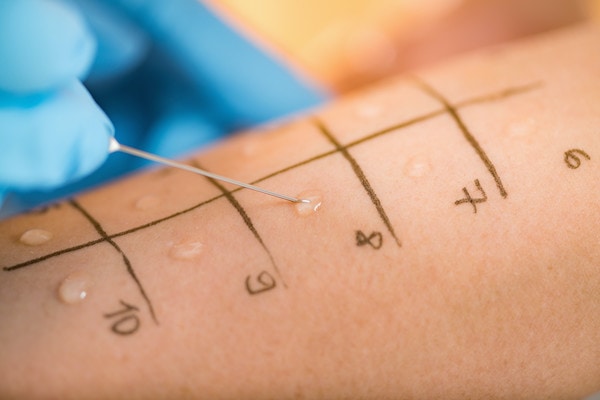EN 15842 Detection of Celery Allergens in Processed Foods
The European Standard EN 15842 provides a method for detecting celery allergens in processed foods. This standard is crucial for ensuring the safety and compliance of food products, especially those intended for individuals with known celery allergies. The methodology described in this standard allows laboratories to accurately identify the presence and concentration levels of celery proteins within various food matrices.
The test involves several key steps: sample preparation, extraction, purification, and detection using immunoassay techniques. Sample preparation typically includes homogenization followed by filtration or centrifugation to ensure that the processed food is in a form suitable for analysis. The extracted proteins are then purified to minimize interference from other components of the food matrix.
The detection process relies on specific antibodies designed to recognize celery allergens. These antibodies bind selectively to the target proteins, and their interaction can be quantified using various immunoassay methods such as enzyme-linked immunosorbent assays (ELISAs). The sensitivity and specificity of these tests are critical for ensuring accurate results.
Accurate detection of celery allergens is not only a matter of compliance with regulatory requirements but also of consumer safety. Mislabeling or the unintentional inclusion of celery in products can lead to severe health risks for individuals who have sensitivities or allergies to this common food allergen. The implementation of EN 15842 helps prevent such incidents by providing a robust and reliable testing protocol.
The standard is widely recognized across Europe and internationally, ensuring that the results from laboratories adhering to this method are consistent and comparable. This uniformity is essential for maintaining high standards in food safety and quality assurance processes.
For quality managers, compliance officers, R&D engineers, and procurement personnel involved in the production of processed foods, understanding EN 15842 can be instrumental in ensuring that products meet regulatory requirements and customer expectations. By integrating this standard into their testing protocols, they can enhance the safety profile of their offerings and build consumer trust.
Why It Matters
The detection of celery allergens is critical for several reasons:
- Consumer Safety: Accurate identification of allergens in food products helps protect individuals with celery allergies from accidental exposure to potentially harmful substances.
- Regulatory Compliance: Adhering to international standards like EN 15842 ensures that processed foods meet legal requirements and avoid penalties for non-compliance.
- Brand Reputation: Demonstrating commitment to food safety can significantly enhance brand reputation and customer loyalty.
- Risk Management: Early detection of allergens allows manufacturers to address issues promptly, reducing the risk of recalls and associated costs.
The ability to reliably detect celery allergens is particularly important in processed foods due to potential cross-contamination during manufacturing processes. Even trace amounts of celery can pose a serious risk for those with sensitivities or allergies.
Scope and Methodology
The scope of EN 15842 covers the determination of celery allergens in various processed food products, including but not limited to:
- Frozen meals
- Pasta dishes
- Canned soups
- Processed meats
The methodology involves several steps, starting with sample preparation. The sample is typically ground or homogenized to ensure a consistent matrix for analysis. Following this, the extraction process removes proteins from the food matrix using appropriate solvents.
Purification of extracted proteins is crucial to eliminate interference from other components. This step ensures that only celery allergens are detected during the final immunoassay stage. The immunoassay technique used in EN 15842 typically involves an ELISA, where antibodies specifically bound to celery allergens are quantified.
The detection limit for this method is set at a level that ensures accurate identification of even trace amounts of celery allergens. This sensitivity is achieved through careful optimization of sample preparation and immunoassay parameters.
International Acceptance and Recognition
EN 15842 has gained widespread acceptance in Europe and beyond, thanks to its rigorous methodology and consistent results across different laboratories. This international recognition is due to the standard's alignment with global food safety initiatives.
The standard is harmonized with other relevant standards such as ISO 17025 for laboratory accreditation and ISO 9001 for quality management systems. These alignments ensure that labs conducting EN 15842 tests are operating at the highest levels of proficiency and reliability.
Recognitions from international bodies further enhance the credibility of laboratories using this standard. For instance, the International Organization for Standardization (ISO) and the European Committee for Standardization (CEN) have endorsed this method, making it a preferred choice for food safety audits and regulatory inspections.
The widespread acceptance of EN 15842 also facilitates global trade by ensuring that processed foods meet consistent standards across different jurisdictions. This uniformity is particularly important in the context of international agreements on food safety and quality assurance.





